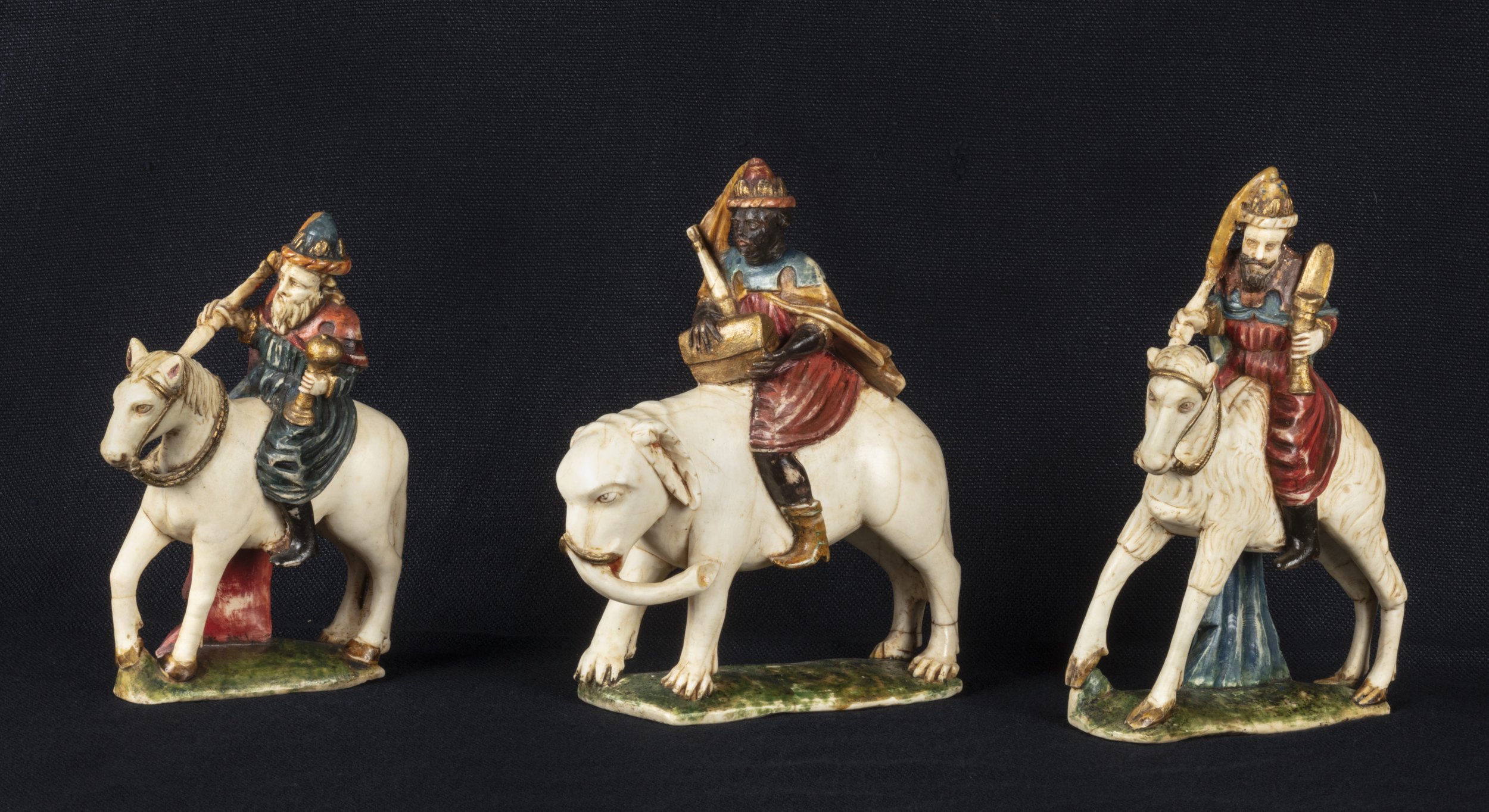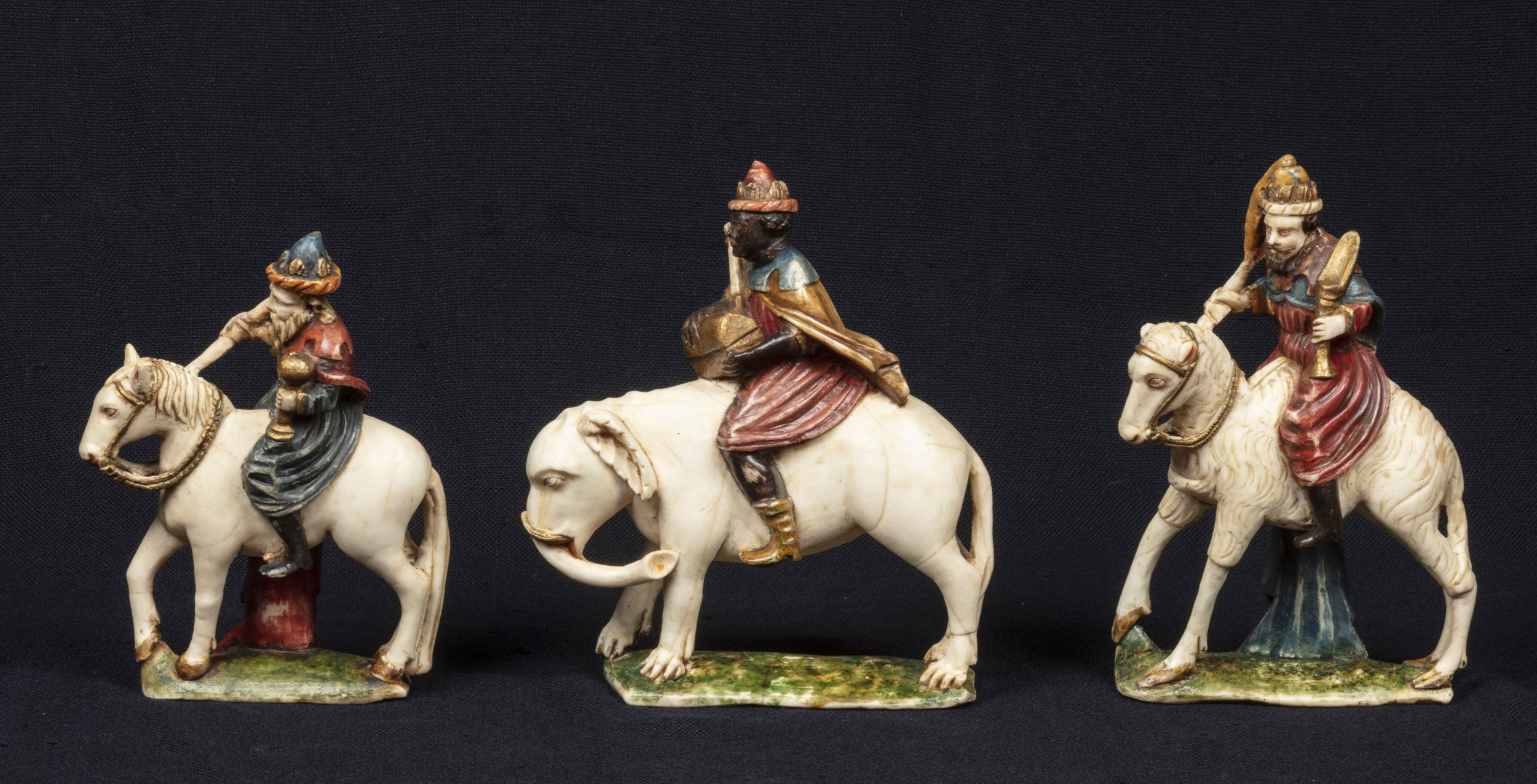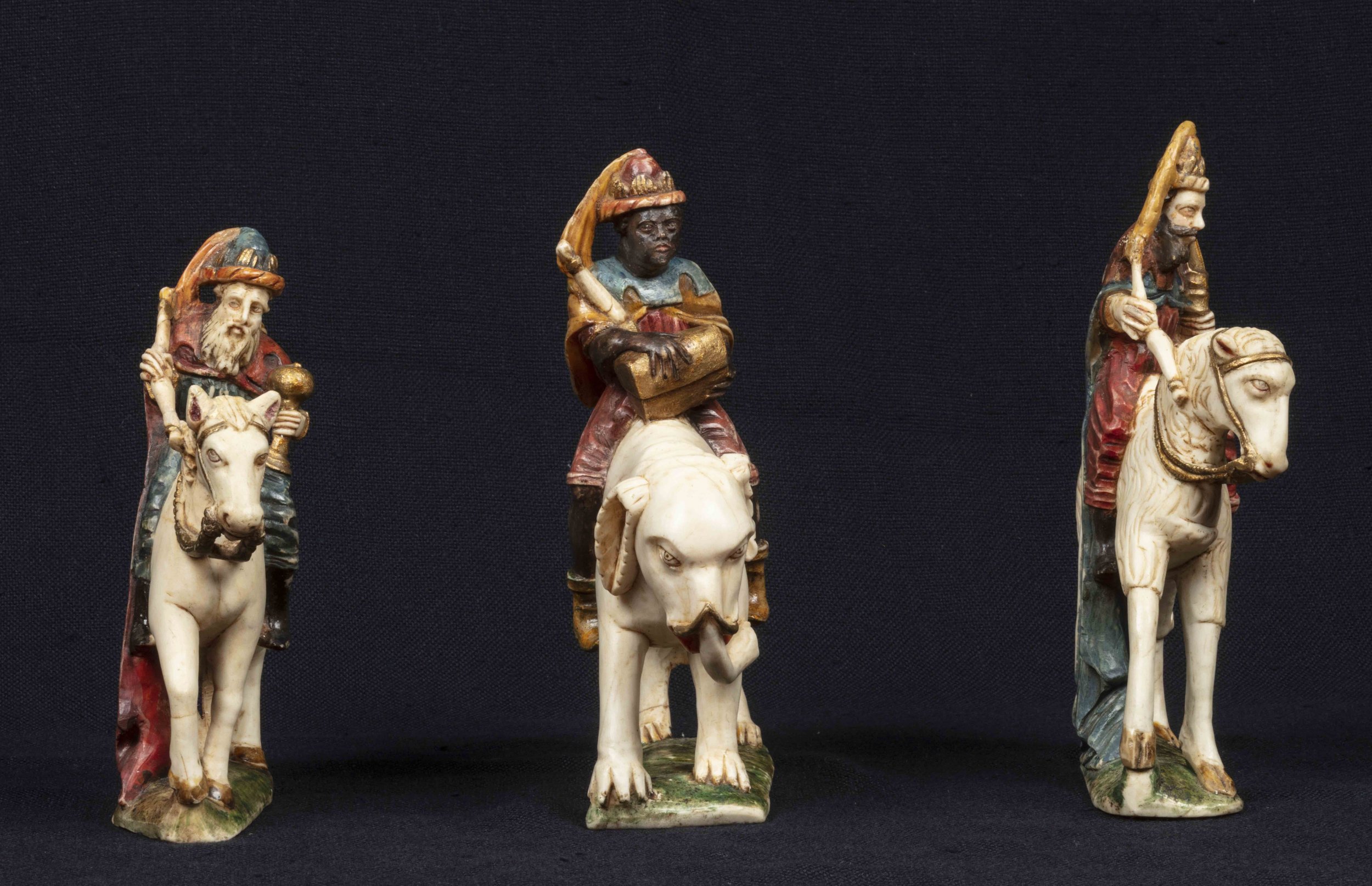PERUVIAN, AYACUCHO SCHOOL, 18th – 19th Century
The Three Magi
Polychrome Huamanga stone
7 ½ x 6 ½ inches (19 x 15.2 cm) each
Provenance:
Private Collection, Spain.
Known as Peruvian alabaster for its translucency and workability, Piedra de Huamanga is a highly prized material from the province of Ayacucho in Peru. In the 17th and 18th centuries, local craftsman in the town of Huamanga began to specialize in the production of small-scale, polychrome religious sculptures made from this distinctive stone. Huamanga sculptures are among the most accomplished examples of carving from the Spanish Americas, where polychrome wood sculpture was a far more common sculptural medium. These works, which were created as independent sculptures or as sculptural groups—such as our three Magi—were intended for ecclesiastical as well as domestics settings.
Our three figures likely formed part of a larger Nativity group—a New World variant of the tradition of the Neapolitan Crèche. Melchior, Balthasar, and Caspar each carry their gifts of gold, frankincense, and myrrh, as specified in the Gospel of Matthew. But the lands from which they traveled and the animals which brought them to Bethlehem are not identified in the Bible. Here the anonymous artist of our figurines has followed a popular tradition that became current in the Renaissance, in which the eldest of the three kings, Melchior, was thought to be from East Asia; the middle magus, Caspar, from Arabia; and the youngest, Balthasar, from Africa. They travel on appropriate modes of transportation: a horse for Melchior, a camel for Caspar, and an elephant for Balthasar, slow as it might make the journey. The natural warm white color of the stone is retained for the three animals and for the skin of the Magi, save for Balthasar whose face, arms, and hands have been delicately painted. With the exuberantly colored robes and hats worn by the Magi, these figures are charming celebrations of the Feast of the Epiphany.





